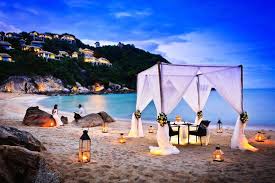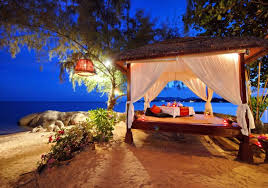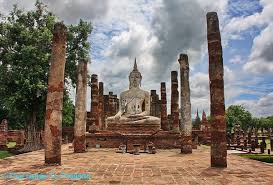Traditional Thai Costumes:-Traditional Thai
costumes varied from city to city and from each historical period. These
costumes are now worn only on auspicious occassions and festivals.
Elements that make up a Thai costume:-
Pha Nung :-a long, rectangular cloth worn around the
lower body which resembles a skirt. It can be draped and folded in
several different ways.
Sin:- a tube skirt that is wrapped around the wait and typically consists of three parts: Hua Sin, Tua Sin, and Tin Sin.
Sabai :-a shawl-like garment that can be used by
both women and men. It is a long piece of silk, about a foot wide,
draped diagonally around the chest with one end dropping behind the
shoulder.
Chong Kraben :-a lower-body, wrap-around cloth. It
resembles pants and is a rectangular piece of cloth measuring 3 meters
long and one meter wide. It is worn by wrapping around the waist,
stretching it away from the body, twisting the ends together then
pulling the twisted fabric between the legs and tucking it in the back
of the waist.Wedding Dresses:- Experience the splendour and originality
of beautiful Thai-style evening & wedding dresses and suits, made
from top-quality fabrics!All dresses made by us will be custom-tailored
according to your requirements regarding size, colour, etc. The dress
prices in our web site are indication prices, and if you are interested
in an original Thai dress please let us have your clothing measurements
in inches or centimeters at the time of your order.In the section ‘Ram
Thai Accessories’ you can find our big range of head dresses, bracelets,
ankle bracelets, necklaces, upper arm rings, and other items
complementing dresses.
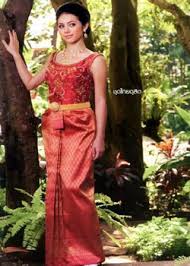
Thailand does not have a national costume but the country’s traditional
costume has been adopted as the national costume and is worn to all
formal occasions. When Queen Sirikit – the Queen consort of Thailand –
accompanied the king to Europe and the United States in 1960, she noted
that there was a need for a modern national costume in Thailand that was
suitable for formal wear. The queen conducted research into the
historical records of Thai royal dresses, and seven official designs
were developed and promoted by the queen and her aides. They are named
the Ruean Ton, Chit Lada, Amarin, Borom Phiman, Chakkri, Chakkraphat and
Siwalai Thai dresses. Since then, these dresses have come into regular
use by the public as well.
Ruean Ton:-It is the most casual clothing of all
outfits and comprises a horizontally or vertically striped silk or
plain-coloured sin with a patterned band, sometimes folded to one side,
The collarless blouse that goes with it is separated from the
ankle-length skirt and this costume is suitable for casual and
non-official functions such as Kathin Ton, a religious ceremony of
presenting royal offerings to monks.
Chitlada:-This costume with a brocaded band at the
hem of the Sin, is a daytime ceremonial dress. It can be worn with a
long sleeved silk blouse, with the front opening attached with five
ornamental silver or gold buttons. This costume is usually worn to a
ceremony that is a not too informal such as the welcoming of official
royal guests.
Amarin:-This costume is an evening attire, made with
brocaded fabric. The blouse is usually wide and round-necked with the
length of the sleeve stretching just below the elbow. The beauty of this
costume is accentuated by its textile and accessories. It can be used
for an evening dinner or at the Royal Birthday Procession.
Borom Phiman:-Also a formal evening attire, this
costume comprises a long sleeved blouse which is either buttoned at the
front or at the back. The fabric is brocaded to create a highly
luxurious look and feel. The collar of the blouse is round-necked and
the skirt and blouse are sewn together like a one-piece dress. The
costume is suitable to be worn in either a formal or semi-formal event
like Royal ceremonies.
Chakkri:-This costume is considered formal and
elegant wear and is normally produced using a weaving technique called
“Yok”. This technique adds extra thickness to the fabric without adding
supplementary threads. Often a touch of gold or silver threads are
added, making the fabric produced this way particularly more expensive.
Chakkraphat:-This costume is similar to Chakkri.
However, it is more conservative and considered more officially
appropriate. The top half of the costume has a pleated shawl covered
with embroidery. It can be worn for royal and national ceremonies.
Siwalai:-It is a formal evening costume similar to
Borom Phiman, but has an over-shoulder sbai. It is worn for royal
ceremonies and formal functions.
What to wear at the beach?
Bikinis, trunks and typical resort-wear are de facto at the beach and
pool on Koh Samui, Phuket and similar beach destinations in Thailand.
However, note the Thai modesty difference: Unlike other island
destinations, you should cover up with some shorts and a T-shirt (or
similar) when you leave the beach or pool.
What should women wear at the beach?
Stick with natural fabrics for cover-ups and – generally – fairly modest
coverage. Always wear your bikini top. Topless sunbathing is a total
taboo. No one’s going to lock you up, but it will make locals nearby
very uncomfortable. Thai women (bar girls notwithstanding) don’t really
‘do’ cleavage.
What should men wear at the beach?
Guys have it easy: your T-shirts and standard-issue ‘man shorts’ mean
your modesty never need be a problem (just put your shirt back on when
you leave the beach). In some spots it might be necessary to wear
mosquito repellent, too.
What’s appropriate clothing for Thai temples?
The basic rule is to cover your shoulders and knees (both sexes), and
ideally you’d cover your ankles too. On the bottom, wear longer shorts,
capris, pants/trousers or a knee-length-or-longer skirt. On top, choose
any shirt that fully covers your shoulders. A T-shirt, blouse or polo is
fine, while a tank top is not. However, a pashmina or scarf worn around
the shoulders over a tank top is acceptable (or used as a makeshift
long skirt), so it’s easy to get ‘temple worthy’ quite quickly.
Shoes for Thai temples?
Closed-toe shoes are more appropriate, whether loafers, flats or canvas
TOMs. Don’t wear laced shoes, as they’re taken off when visiting Thai
temples. Tying and untying shoe laces? No thanks. A slip-on shoe or
dressy sandal is ideal.
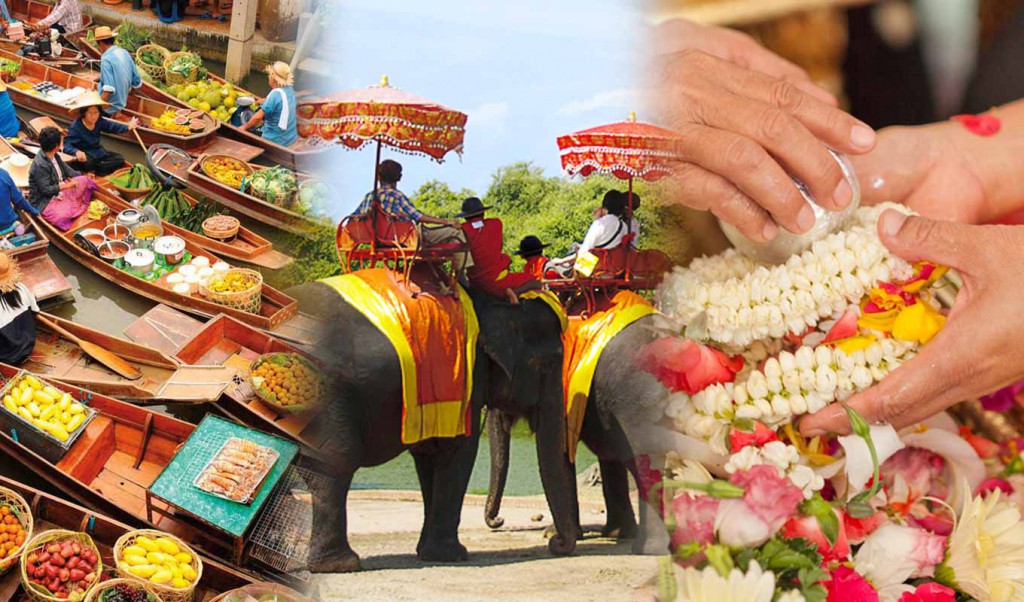
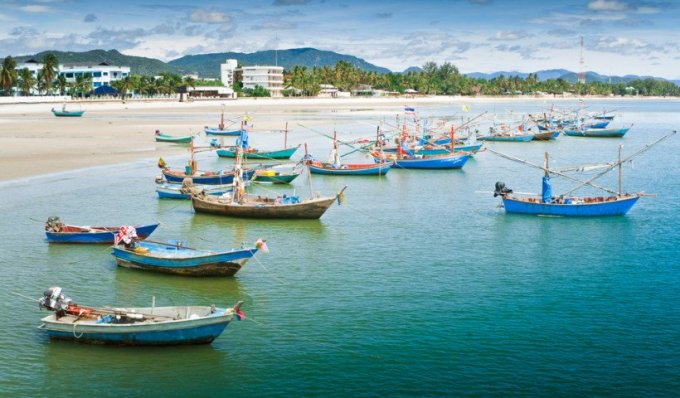

 1`
1`


